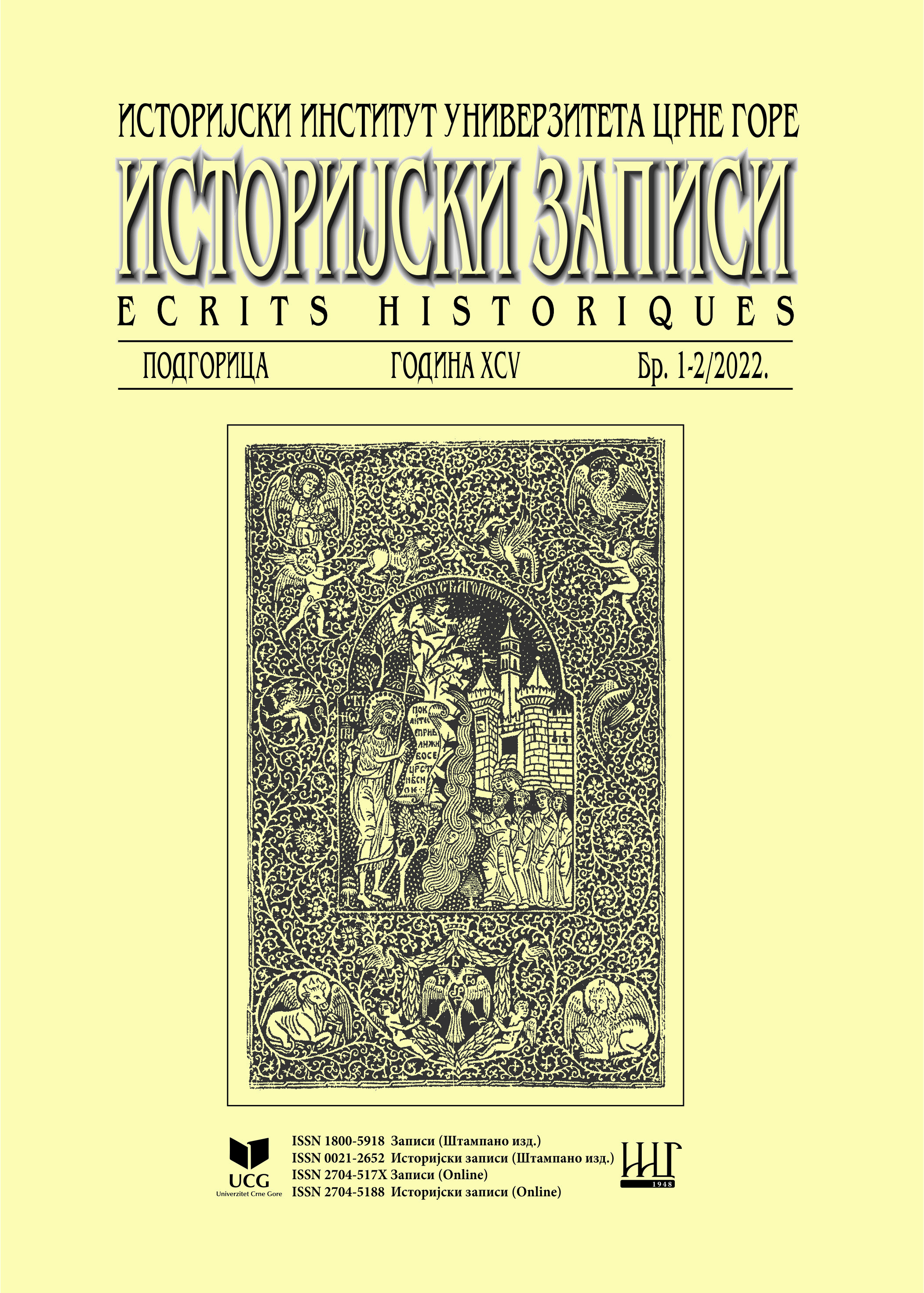UTICAJ TRINAESTOJULSKOG USTANKA I NOR-A NA DJELA SPOMENIČKE ARHITEKTURE
The Influence of 13th July Uprising and the National Liberation War on the Works of Monumental Architecture
Author(s): Magdalena RadunovićSubject(s): Cultural history, Architecture, WW II and following years (1940 - 1949), Post-War period (1950 - 1989)
Published by: Историјски институт Црне Горe
Summary/Abstract: Memorials are used to permanently mark important events, preserve memories of prominent personalities, nurture human ideals and cultural and historical traditions, and pay tribute to freedom fighters, civilian victims of war and mass suffering. Recognition, preservation and popularization of the original tangible and intangible message of monuments and memorials is a professional obligation of all those who deal with the valorization of cultural heritage in various ways. Different types of memorials: monuments, memorial plaques, memo- rial busts, memorial houses, memorial tombs, places of mass executions and other memorials, as materialized memories of important personalities and events, largely depict value patterns and social circumstances of the period in which they were erected, as well as the artistic achievements and craftsmanship of those who shaped them. Monuments and memorials are witness- es of our turbulent history, memory of heroic deeds, significant historical events and personalities. The special feature of the memorials is their spiritual value in terms of preserving the memory of their dedication, and for the most of these memorials, it is the legacy of the Thirteenth of July Uprising and the entire National Liberation War. Their authorial, artistic and architectural value is also special. As such, these memorials represent an extreme- ly important segment of the state‘s cultural heritage. In accordance with the passing time, the social and cultural attitude towards memorials is evolving and changing. The erection of the monuments is becoming part of the urban transformation of the city, especially during the past few decades, but also due to more intensive international cooperation. The memorials were intro- duced into the Register of Cultural Monuments of the Institute for the Protection of Cultural Monuments as: „monuments of the People‘s Revolution”, „monuments of the National Liberation War”, „monuments from the First World War”, „monuments from the Balkan Wars”, „Sculpture” and others. The first law regulating the issue of memorials was passed in 1971.
Journal: Историјски записи
- Issue Year: 2022
- Issue No: 1-2
- Page Range: 375-385
- Page Count: 11
- Language: Slavic (Other)

